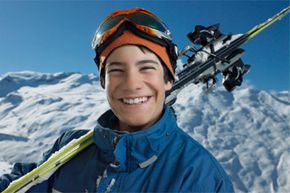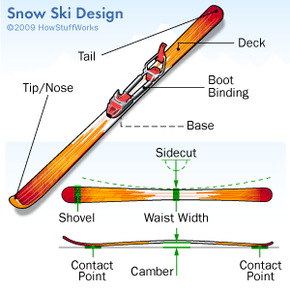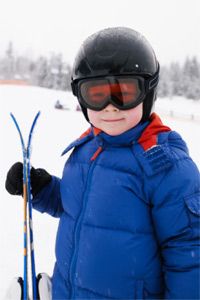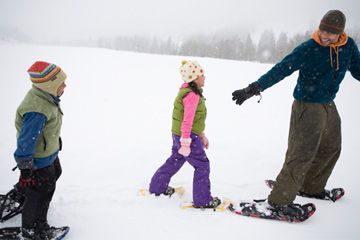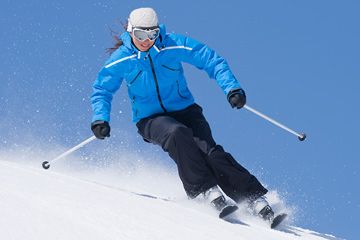We've come a long way in 7,000 years -- the approximate amount of time since an ancient human tribe carved images of someone using two primitive skis (and one pole) on a cave wall in Europe [source: Dawson]. The oldest surviving ski dates from 2500 B.C. It was found near Hoting, Sweden, in a peat bog, the sort of environment known for preserving ancient artifacts.
Today, snow skis come in many types, and the sheer number of them -- cross-country, downhill, powder, freestyle and all-mountain skis -- can be overwhelming. Figuring out which skis are best for you depends on your ability and the type of skiing you do, including the surfaces on which you ski, such as heavy powder, groomed slopes, moguls or some combination thereof. You should also know how you like to ski, whether it's whipping straight down the slopes or zigzagging across runs with a slow and scenic route in mind.
Advertisement
Talking with an experienced ski retailer can help you to make a more informed purchase or lead you to a rental option that's both comfortable and suited for your style. As a rule, don't buy demo skis or skis that have poor customer reviews. Even if you're buying, you shoulder consider renting several different types of skis to try them out before committing to a purchase, although buying skis will save you money in the long run, particularly if you ski more than once in a season. Buying your own skis also means that you can get skis that are more customized to your needs and physical dimensions. Keep in mind that you may find a better selection in a large, dedicated ski shop, rather than at a rental facility at a ski resort.
In this article, we'll take a look at the various types of skis, boots and bindings, how they work together and what innovations have appeared in ski technology in recent years.
Advertisement
